
E-Bikes' Potential for Modern Transportation Unleashed.
The transportation industry is experiencing a remarkable transformation, with electric bicycles (e-bikes) emerging as a promising alternative to traditional commuting. These e-bikes blend traditional bicycles with electric power, offering a compelling solution for modern transportation needs.
E-bikes have evolved significantly since their inception as prototypes and experimental designs. With advancements in technology and societal attitudes toward sustainable transportation, e-bikes have gained widespread acceptance and recognition worldwide. These modern marvels consist of an electric motor, rechargeable battery, controller, and sensors, working together to enhance riders' pedaling power and enable them to conquer hills, maintain higher speeds, and cover longer distances. E-bikes offer numerous benefits, including reducing carbon emissions, air pollution, promoting physical activity, cost-effectiveness, flexibility, and inclusivity. They also bridge the gap between different fitness levels, enabling people to maintain independence and mobility.
Understanding the workings of e-bikes is crucial for an optimal riding experience, and choosing the right e-bike depends on factors like legal requirements, battery capacity, frame types, motor power, and more. The future of e-bikes holds great promise, with advancements in battery technology, smart device integration, and collaborations with city planners shaping the industry. Join us on this exciting journey to unlock the full potential of e-bikes and experience the greener, healthier, and more efficient way we commute and travel.
The Evolution of E-Bikes: A Glimpse into the Past
The evolution of e-bike technology has been marked by significant technological advancements, paving the way for a revolutionary mode of transportation. Early e-bike designs paved the way for a more practical and reliable mode of transportation, with lighter, more efficient lithium-ion batteries and compact electric motors. Governments and transportation authorities have recognized the potential of e-bikes as a sustainable mode of transportation, leading to regulations defining classifications, maximum speed limits, and safety requirements. Today, e-bikes are a mainstream phenomenon, with a wide range of models available to cater to various needs and preferences. As battery technology continues to improve, e-bikes with longer ranges, faster charging capabilities, and lighter weights will likely emerge.
Integration with smart technology and connectivity features will likely enhance the riding experience, offering seamless navigation, performance monitoring, and integration with other smart devices. The future of e-bikes is poised to be even more exciting, revolutionizing the way we travel and shape the cities we live in.
Understanding E-Bike Technology: How Do E-Bikes Work?
E-bikes are a fascinating combination of traditional bicycles and advanced electric technology, offering a fascinating riding experience. The motor, which provides power assistance, is integrated into the wheel hub or crankset, and modern e-bikes may feature all-in-one systems. Rechargeable batteries supply power to the motor and sensors and controllers monitor parameters like pedal cadence, speed, and torque. E-bikes often employ pedal-assist and throttle-based systems, with adjustable levels of assistance. E-bikes also include real-time information and regenerative braking.
However, e-bikes are subject to legal classifications and regulations, ensuring compliance and a safe riding experience. As e-bike technology advances, improvements in battery efficiency, motor performance, and integration with smart devices like GPS navigation and smartphone apps contribute to the overall convenience and enjoyment of the riding experience. E-bikes are revolutionizing the way we travel and shaping the future of sustainable transportation.
Benefits of E-Bikes for Commuting and Beyond
E-bikes are a fascinating combination of traditional bicycles and advanced electric technology, offering environmental advantages, improved health, and cost savings for modern transportation needs. I guess the U.S. Department of Transportation checked the benefits of e-bikes before taking steps to issue $25 million to enable the city to set up outdoor e-mobility battery charging and storage stations at 53 city Housing Authority developments stated by Retailer and Industry News (BRAIN) (2023). Let's explore the key benefits in more detail:
-
Environmental Advantages: Significant benefits of e-bikes include significantly reduced carbon emissions and air pollution, making them a sustainable transportation choice, replacing conventional vehicles, and contributing to cleaner air.
-
Health and Fitness Benefits: E-bikes provide a unique combination of power assistance and convenience, promoting physical activity and improving overall fitness. Regular commuting enhances cardiovascular fitness, strengthens muscles, and improves mental well-being without perceived exertion.
-
Cost Savings: E-bikes offer significant savings over time compared to conventional vehicles, resulting in reduced maintenance costs and longer lifespans, making them a budget-friendly alternative for daily commuting.
-
Flexibility and Convenience: E-bikes provide flexibility and convenience for urban commuting, bypassing traffic congestion and enabling shorter travel times. They access bike lanes, cycle tracks, and parking spaces, eliminating frustrations during peak hours.
-
Accessible Transportation: E-bikes provide wider transportation options for individuals with physical limitations or health conditions, overcoming physical barriers and offering power assistance, making them accessible to a diverse range of riders.
-
Commuting Versatility: E-bikes offer versatility for shopping, exploring surroundings, and errands, making them suitable for a wide range of daily activities, ensuring comfort and convenience.
- Reduced Congestion: E-bikes are a sustainable and eco-friendly alternative to cars in urban areas, reducing traffic congestion and occupying less road space. These vehicles offer numerous benefits, including reduced environmental impact, health and fitness advantages, and reduced congestion. By adopting e-bikes, urban areas can enjoy a greener, more active lifestyle, promoting a healthier future.
Overcoming Challenges: Addressing Misconceptions and Concerns
Misconceptions about e-bikes need to be shed to improve understanding and wider adoption of this innovative mode of transportation.
-
Regulations for e-bikes and safety considerations: E-bike safety is a problem, especially in light of their speed and ability to coexist with other road users. It's crucial to keep in mind that e-bikes are governed by laws in many places, including classifications and speed limits. E-bike riders can increase their own and other people's safety by abiding by these standards and adopting safe riding practices, including donning helmets, following traffic laws, and using designated cycling infrastructure.
-
Range Anxiety and Battery Life Management: Another frequent worry is the fear of running out of battery life. Yet, improvements in e-bike technology have greatly increased the capacity and effectiveness of batteries. Riders can enjoy longer rides and arrange their trips accordingly by carefully managing their batteries. It's also crucial to note that a lot of e-bikes feature pedal assist, which enables users to keep pedaling even when the battery is dead. This feature guarantees a dependable mode of transportation no matter how long the battery lasts.
-
Charging Infrastructure and Practicality: Questions about the availability of charging stations and the usefulness of charging e-bike batteries frequently come up. Any standard electrical outlet can be used to recharge an e-battery, or bike making it simple to do so at home, at work, or public charging stations. The length of the charging procedure might range from a few hours to several days, depending on the battery capacity. Communities are installing more specialized e-bike charging stations as e-bike use grows to meet customers' changing needs.
-
Connection with Present Transportation Systems: In some areas, e-bike integration with current transportation networks can be difficult. Notwithstanding, many cities are actively investing in the infrastructure required for cycling, such as bike lanes, bike-sharing programs, and cycling-friendly public transportation options. By advocating for and supporting greater cycling infrastructure, riders can help remove these barriers and boost the use of e-bikes. A more efficient and interconnected transportation network will result from this.
- Perceptions and Cultural Acceptance: E-bike misconceptions might differ between locales and communities. Nonetheless, they provide accessible transit options, encourage physical activity, and provide health benefits. Misconceptions can be dispelled and the benefits highlighted, resulting in increased acceptance and recognition. A favorable environment for e-bike adoption can be created through initiatives that concentrate on e-bike safety, battery management, the development of charging infrastructure, and cultural acceptance. E-bikes can change urban mobility, ease traffic, and advance sustainable transportation by overcoming these obstacles.
The Impact of E-bike on Urban Mobility and City Planning
E-bikes transform urban mobility, impacting city planning and influencing initiatives to shape the future of urban transportation.
-
First- and Last-Mile Solution: E-bikes bridge the distance between transportation hubs, including railway stations or bus stops, and ultimate destinations. They lessen reliance on automobiles for these brief journeys by enabling commuters to travel short distances quickly and effectively. Cities may promote multi-modal commuting and seamless connections by incorporating e-bikes into their transportation systems, enhancing accessibility and easing traffic congestion in metropolitan areas.
-
Reducing Traffic Congestion: E-bikes may reduce traffic congestion in urban areas. There are fewer vehicles on the road as more individuals choose e-bikes for their everyday travels rather than driving. E-bikes are more space-efficient, require less parking infrastructure, and make it easier for riders to move around crowded places. Cities can experience better traffic flow, shorter travel times, and more overall efficiency in their transportation systems by encouraging the use of e-bikes.
-
Bike-Friendly Infrastructure: The demand for bike-friendly infrastructure in cities is being driven by the rise of e-bikes. Cities are making investments in specialized bike lanes, cycle tracks, and upgraded cycling infrastructure to support the rising number of e-bike riders. These programs encourage cycling, increase safety, and improve the riding experience for e-bike users. To meet the charging requirements of e-bike users, cities are also adding e-bike charging stations in public areas and parking facilities.
-
E-Bike Sharing Programs: E-bike sharing programs are becoming more popular in urban areas since they provide a practical and environmentally friendly substitute for conventional transportation methods. By enabling users to rent e-bikes for brief periods, these initiatives encourage last-mile connectivity and lessen reliance on private automobile ownership. Cities may offer residents and visitors easily accessible and environmentally beneficial transportation options by introducing well-planned e-bike rental programs.
- Supporting Sustainable Transportation: E-bikes play a significant role in sustainable transportation plans. Cities may lower carbon emissions, enhance air quality, and move toward attaining their sustainability objectives by encouraging the use of e-bikes. E-bikes provide a more environmentally friendly alternative to automobiles and motorcycles since they produce fewer greenhouse gases and less noise. Urban transportation plans that include e-bikes tend to be more livable and environmentally responsible.
- Partnerships with City Planners: Working alongside transportation agencies and advocacy groups, city planners are incorporating e-bikes into long-term city planning initiatives. Including e-bike infrastructure, creating bicycle networks, and taking into account e-bike parking and charging facilities are all part of this collaboration. By embracing e-bikes, communities can build livable, connected, and sustainable urban environments that improve accessibility, reduce traffic congestion, and improve air quality.
Choosing the Right E-Bike: Factors to Consider
- Evaluating your needs: commuting, off-road excursions, or relaxing rides
- Legal requirements and e-bike training
- Understanding battery size and range for the usage you intend
- Considerations for frame types, motor power, and additional features
- To make well-informed decisions, consult with specialists.
More details on THE BEST EBIKE TO BUY are here.

Maintenance and Care for E-Bikes
- Simple maintenance tasks: lubrication, cleaning, and tire pressure checks
- Best practices for battery management and charging
- Regular servicing and inspections
- Locating certified repair facilities and post-purchase assistance.
Read more on MAINTENANCE & AFTER-SALES SERVICE in this article...
The Future of E-Bikes: Potential for Modern Transportation
Continuous innovation in e-bikes is shaping the future, enhancing functionality, performance, and the riding experience through emerging trends.
- Improvements in Battery Technology: Battery technology is one of the most important areas of advancement in e-bikes. We may anticipate advancements in energy density, battery life, and charging capabilities as battery technology continues to advance. Future e-bikes may have lighter, smaller, and higher-capacity batteries, enabling longer rides without sacrificing performance. Fast-charging technology advancements will help shorten charging periods, making e-bikes even more practical and convenient for regular use.
-
Integration with Smart Devices and Connectivity: Another intriguing trend is the integration of e-bikes with smart devices and connectivity. The ability to connect an e-bike to a smartphone, a GPS, and other smart accessories may be included in some e-bike models. By offering real-time trip information, support with navigation, and connection with fitness-tracking programs, this connectivity can improve the riding experience. For a customized and effective ride, riders can stay connected, track performance, and adjust their e-bike settings.
-
Materials that are both light and highly effective: Modern materials science is enabling the creation of e-bike components that are both lightweight and highly effective. For instance, carbon fiber is increasingly used in e-bike frames and components because it provides outstanding strength-to-weight ratios and improves overall performance. While ensuring durability and ride comfort, the use of lightweight materials enables quick handling, enhanced efficiency, and increased range.
-
Improved Motor Efficiency and Performance: E-bike motors are also continually being improved. We may anticipate more effective and potent motors that deliver seamless power support with little vibration and noise. The energy efficiency of motor technology will continue to advance, enabling longer rides on a single charge. Furthermore, improvements in motor control algorithms will lead to smoother power delivery, improving the riding experience as a whole.
-
Integration of Urban Mobility: E-bikes are positioned to play a crucial role in urban mobility as cities develop and place a higher priority on sustainable transportation options. With the spread of bike-sharing programs, e-bike charging stations at major transit hubs, and the creation of infrastructure especially for e-bikes, we might expect to see a stronger integration of e-bikes with the existing transportation infrastructure.
-
Ongoing Market Diversification and Growth: It is anticipated that the e-bike market would maintain its upward trend. We may predict a diversification of e-bike models to satisfy varied riding tastes as e-bikes become more mainstream and extensively used. This includes the creation of specialist e-bikes for off-road excursions, cargo bikes for hauling freight, and sporty, performance-driven e-bikes. Riders will have access to a wider variety of features and alternatives thanks to the market's expansion, which will take into account their unique demands and preferences.
- Sustainability and the Circular Economy: Sustainability will be a key focus in the future of e-bikes. Manufacturers and designers are exploring eco-friendly materials, incorporating recycled components, and implementing sustainable manufacturing processes. The concept of a circular economy, where e-bikes are designed for longevity and recyclability, will become more prominent. This approach ensures that e-bikes have minimal impact on the environment throughout their life cycle, from production to disposal.
As we look to the future, the possibilities for e-bikes are vast. The ongoing innovations and emerging trends promise to make e-bikes even more practical, efficient, and enjoyable. With advancements in battery technology, connectivity, lightweight materials, and urban integration, e-bikes are set to become an increasingly integral part of sustainable transportation systems, promoting greener and healthier cities. The future of e-bikes is bright, and the ride ahead is full of exciting possibilities.
Conclusion
The rise of e-bikes is a transformative shift in urban mobility, offering a sustainable and practical solution to challenges such as reduced carbon emissions and improved air quality. These electric bicycles offer health and fitness benefits, cost savings, and flexibility, empowering riders to navigate traffic, avoid parking, and overcome physical limitations. However, addressing misconceptions and concerns is crucial to foster a safe and inclusive e-bike culture. By addressing range anxiety, improving charging infrastructure, and integrating e-bikes with existing transportation systems, e-bikes can become an integral part of sustainable transportation solutions. As the e-bike market expands and diversifies, riders will have a wealth of options catering to their unique needs and preferences.
The journey of e-bikes represents a cultural shift towards sustainable living and a reimagining of our relationship with cities. By embracing e-bikes, we can transform daily commutes into enjoyable experiences, reduce our carbon footprint, and contribute to cleaner, healthier, and more connected urban environments. Together, we can unleash the full potential of electric bicycles and reshape the way we commute, explore, and thrive in our modern world. Ready to purchase an e-bike in Canada? Click here for a discount. If you're staying in the US, we have a warehouse there. For further details, visit Tesgo US.
We are here to assist you with all your post-sales needs.
Newletter
Promotions, new products and sales. Directly to your inbox.
Lastest Blog Post


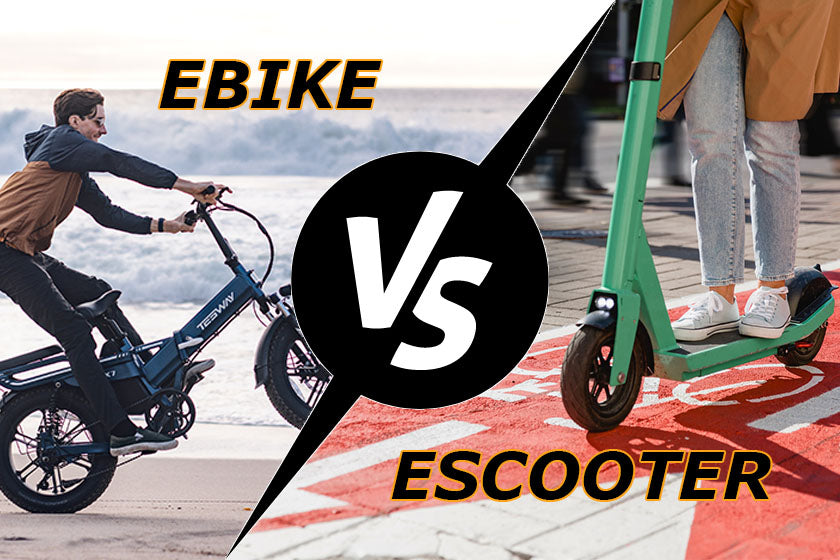

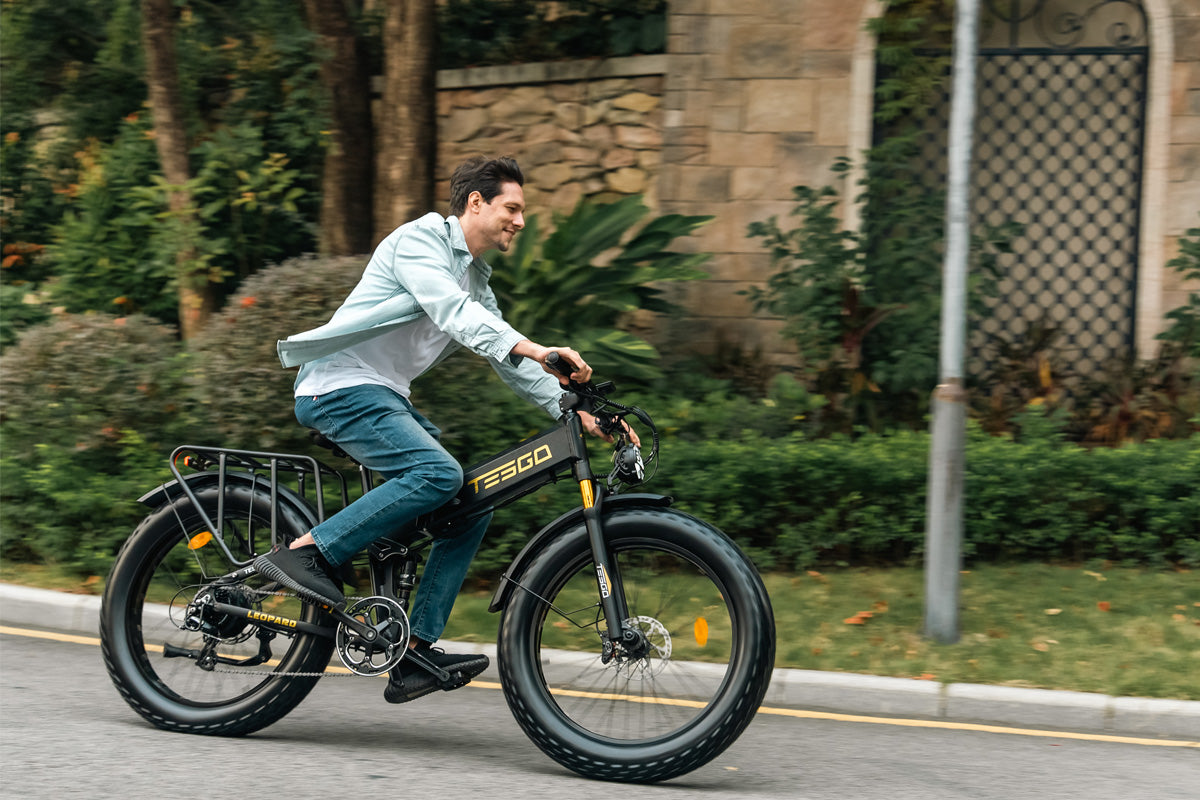






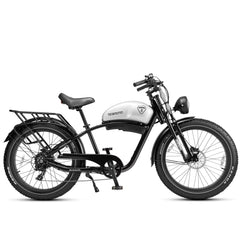







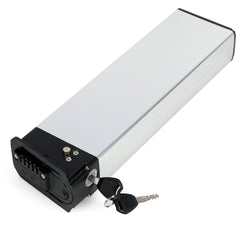
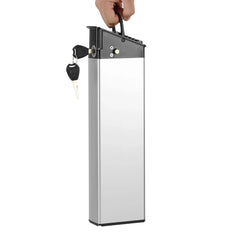
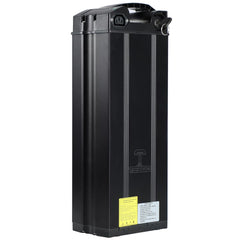



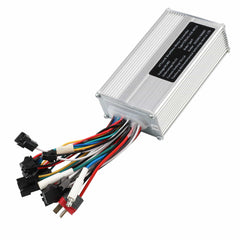

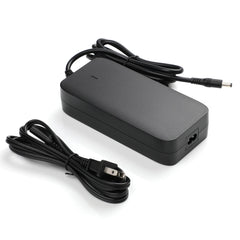
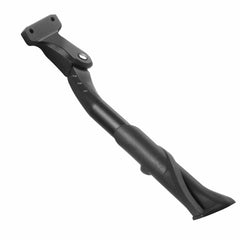



 US
US










